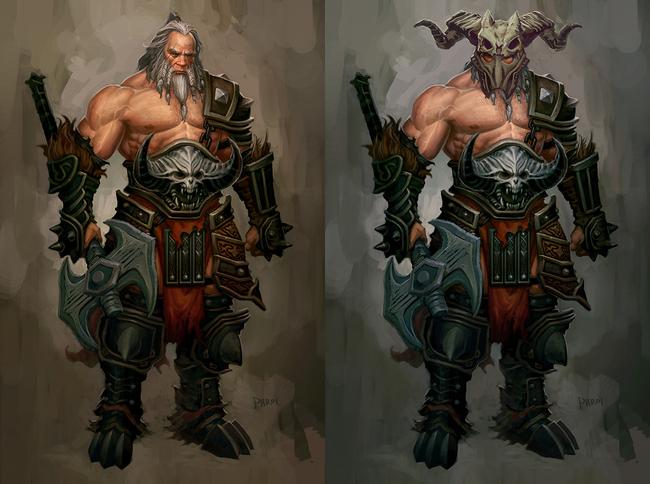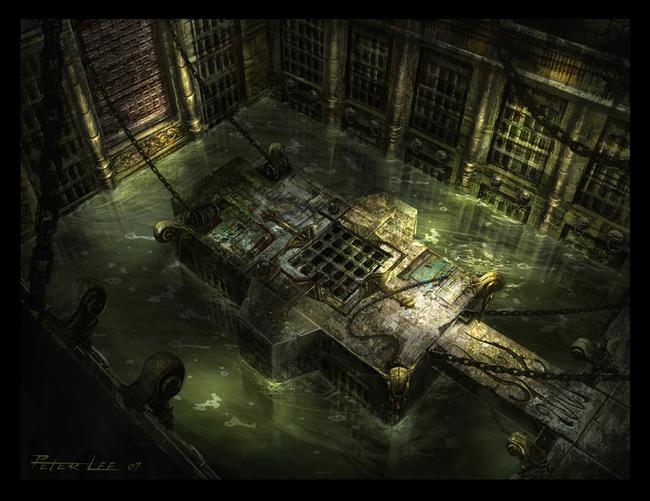Diablo III Preview
Sequels are tricky. The more revered the original was, the harder it becomes to make a follow-up. Make it too similar, you fail. Make it too different, you fail. Only make some changes, and it gets brushed off as iteration for money’s sake. As if that wasn’t all, you don’t just have to contend with what the previous game was, but also what the fans FELT about it.
With all this in mind, Blizzard had a gargantuan task before them with crafting a new Diablo game ten years after the last one. They have to modernize it while still retaining what not only made the originals great, but also what the fans felt and remembered when thinking about Diablo. We’ve taken a look at the Diablo III beta, to see just what has changed, and what has stayed the same.

Let’s start with the changes. The most obvious one is the fact that it’s... polygonal! It’s easy to forget that the first two games were sprite-based, but Diablo III almost takes a Duke Nukem 3D-like glee in telling you that “Look! We made a three-dimensional world! With objects! And physics!” Enemies go flying, you can break tables and coffins, and there’s plenty of showy environmental kills.
The other big, big change is how the skill system works. Diablo II was one of those games, like World of Warcraft, where people made and shared spreadsheets full of different builds for every class. They would save up 10-20 skill points simply because they wanted to invest them higher up in the skill tree.
I personally never went that far, but I always enjoy customizing my characters in RPGs, thinking hard about whether I want increased magic damage or get a bigger block percentage. Because of this, I was very suspicious when I heard that you neither pick your stats nor what a skill to level up, but that it’s instead based on a slot system.
The way it works is like this; you unlock a skill once you reach the required level for it (very often in the start), but you only have a certain amount of slots to put them in. You start off with two, and you only ever get six (plus four passive slots).
So instead of removing customizability, like it initially felt like, they have pushed it from selecting where to put points individually, to selecting whole skills that complement each other. Every time I levelled up and unlocked a new skill, I carefully considered if I should exchange one of my current skills with it, or maybe I should even “respec” and use it with a different set of skills.
This got convoluted pretty quickly, so let me provide an example. When I was trying out the Wizard, I was playing him as a typical long range damage dealer, with Magic Missile, Arcane Orb and Electrocute. However, after a while I switched from a wand to a dagger, and I switched my spells to things like Spectral Blade, Ice Armour, and other skills designed for closer combat.
So I was pleasantly surprised when I realized that while I was doing this, I got the same little joy I get from placing points in the traditional RPG levelling system. I was reading the description and stats carefully, weighing one skill against each other, thinking about which one went well together.

Now we come back to what I was talking about before, recapturing the feel of an old game. This system is remarkably different from the previous Diablo games, and even different from most action-RPGs. Even so, it still evokes the same feeling I remember from when I was playing Diablo II back in the day.
This also has to do with all the similarities to the previous game. The broad strokes are still there, but also some important details return. Especially the sound effects and music are both evocative and sometimes identical, and I can feel memories resurfacing every time I open a chest or walk into Tristam and hear the haunting guitar strings.
Though there are changes that still make it feel like the old games, there are also some that makes it feel different and fresh, like the way Diablo III treats mana. Instead of having just one for all classes, each one treats their own resource differently, more like WoW’s classes.
For example, the Barbarian starts on zero and builds his ‘rage’ as he deals damage, while the Demon Hunter has two different ones; ‘hatred’ and ‘discipline’. Hatred is for fast, damaging attacks and regenerates quickly, while discipline is used for tactical abilities and comes back slowly. This differentiates the classes from each other more than usual RPGs, and requires you to think of how and when you use your skills.

I could go on and on about what’s old and what’s new. I could talk about how the health orbs affect the pace of the combat. I could talk about how silly it is that I enjoy the fact that inventory tetris is back. I could talk about the seamless online features, or how I didn’t see a single load screen, ever. (Impressive, by the way, especially on a two year old system.)
But here’s what you need to know. It is that I played it, and I felt like it will be a worthy sequel to Diablo II. I felt that Blizzard has innovated in pretty much exactly right places, while retaining the action, atmosphere and the little details that set Diablo apart from other games.